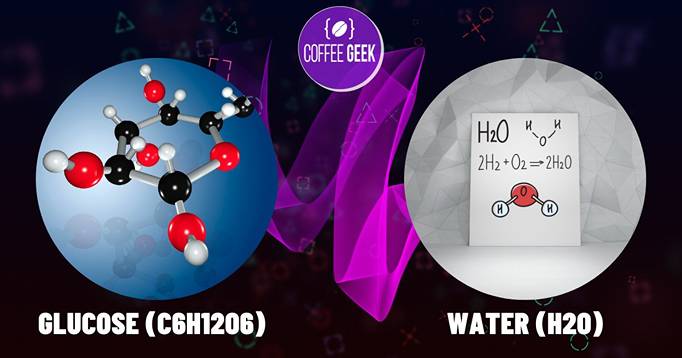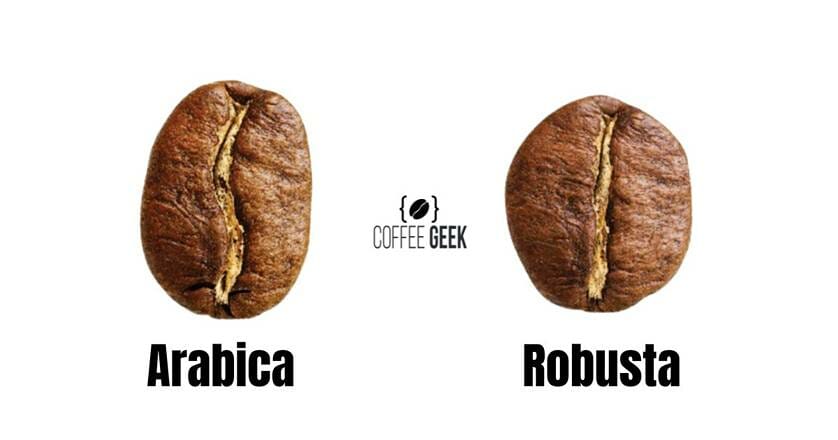Is coffee a pure substance? This is a question many people often ask when discussing the drink’s composition and properties.
To understand whether coffee can be considered a pure substance or not, it is essential to first understand the difference between pure substances and mixtures.
A pure substance is a material that consists of only one type of particle, such as a single element or compound.
Mixtures, on the other hand, consist of two or more substances combined together without a chemical reaction occurring between them.

When we explore the components of coffee and its various properties, we can determine if it falls into either of these categories.
Key Takeaways
- Coffee’s classification as a pure substance or mixture depends on its chemical composition.
- Analyzing coffee’s components and properties helps to understand its purity.
- Preparation methods can impact the perceived purity of coffee.
Understanding Pure Substances and Mixtures
As a chemist, it’s essential to have a clear understanding of pure substances and mixtures.
Both terms are used in day-to-day chemistry, and knowing their differences helps in further studying and classifying matter.
In this section, I’ll briefly discuss each of these concepts.
Pure Substance
A pure substance is a form of matter that has a constant composition and properties that are constant throughout the sample.
Pure substances can be further classified into elements and compounds. Elements are made up of individual atoms of one kind, such as oxygen or carbon.
Compounds are composed of molecules that contain atoms of two or more different elements chemically bonded together in a specific ratio, like water (H2O) and glucose (C6H12O6).

Mixture
A mixture, on the other hand, is a physical combination of two or more substances (elements and/or compounds) that do not chemically bond together.
The components of a mixture retain their individual properties and can often be separated by physical means.
Mixtures can be classified into two categories: homogeneous and heterogeneous mixtures.
Homogeneous Mixture
A homogeneous mixture is a type of mixture where the composition is uniform throughout its volume.
This means that the substances are evenly distributed, and it is difficult to distinguish one substance from another.
Examples of homogeneous mixtures include:
- Air (a mixture of nitrogen, oxygen, and other gases)
- Saltwater (sodium chloride dissolved in water)
- Alloys like brass (a mixture of copper and zinc)
Heterogeneous Mixture
In contrast, a heterogeneous mixture is a type of mixture that has a non-uniform composition.
The substances are not evenly distributed in a heterogeneous mixture, and it is often possible to see the individual components.

Examples of heterogeneous mixtures include:
- Oil and water (two immiscible liquids)
- A bowl of cereal with milk
- Granite (a combination of different minerals)
Is Coffee a Pure Substance or a Mixture?
Assessing Coffee’s Homogeneity
As a coffee enthusiast, I’ve often wondered if coffee is a pure substance or a mixture.
From my understanding of chemistry, a pure substance consists of either a single element or compound, while mixtures are combinations of two or more substances.
When I think about the process of making coffee by infusing hot water with coffee grounds, it seems evident that the final brewed coffee is not a single element or compound, but a combination of various ingredients.

In fact, coffee is composed of multiple chemical compounds, such as caffeine, which acts as a stimulant, and many other molecules that give it its unique taste and aroma.
This makes it a mixture rather than a pure chemical substance like a single element or compound.
When I consider the homogeneity of brewed coffee, it appears to be a homogeneous mixture since it has only one visible phase – the liquid state.
A good comparison to coffee’s homogeneity would be orange juice, which can also be a homogeneous mixture if the pulp is evenly distributed or a separated liquid and solid phase in its original state.
Variability of Coffee Preparation
In the realm of coffee drink preparation, there is a wide variety of methods that can lead to different levels of homogeneity in the final brew.
From using a French press to an espresso machine, each method can impact the distribution of elements and compounds within the coffee.
With the French press, for instance, there might be more coffee grounds at the bottom of the cup, resulting in a slightly heterogeneous mixture.

While brewed coffee could be considered a homogeneous mixture because it has a single liquid phase, it’s essential to acknowledge that coffee beans and grounds are not pure substances.
Instead, they form a heterogeneous mixture as they contain different-sized particles, chemicals, and components.
The variety in coffee preparations contributes to the distinction that coffee is not a pure substance, but a mixture with varying degrees of homogeneity depending on the brewing method.
Finally, it’s important to note that although coffee itself is not a pure chemical substance, it can still be considered a pure substance in the context of not having any additives or contaminants.
As a coffee lover, the complexities and variations in coffee chemistry only add to my ongoing appreciation for the craft of brewing the perfect cup.
Coffee Composition and Properties
As a coffee enthusiast, I’ve always been intrigued by the complexity of coffee and its properties.
The composition of coffee depends on various factors, such as the coffee bean origins, the roasting process, and the brewing techniques.
In this section, I will discuss the details of these factors and how they contribute to the properties of coffee.
Coffee Bean Origins
The composition of coffee begins with the coffee beans themselves. There are two main species of coffee plants that produce beans: Arabica and Robusta.
The Arabica plant is known for its more delicate flavor coffee beans, while the Robusta plant produces a more robust and earthy taste.
The beans contain various compounds such as carbohydrates, proteins, lipids, and minerals, which contribute to the overall flavor and aroma of the coffee.

The fruit of the coffee plant contains important components like sugars and antioxidants.
As the fruit is processed and the beans are extracted, these components influence the final coffee’s taste.
Additionally, the terroir (geographical environment) where the plant is grown affects the properties and composition of the coffee beans, making coffees from specific origins unique and highly sought after.
Roasting Process
Once the coffee beans are harvested, the roasting process plays a significant role in determining coffee’s final composition and properties.
Roasting coffee beans involves heating them at high temperatures, which triggers various chemical reactions.
The most notable change during roasting is the Maillard reaction, where sugars and amino acids react, creating the rich, complex flavors and aromas we associate with coffee.

During roasting, coffee beans lose weight as they lose moisture and volatile compounds, such as carbon dioxide, are released.
This process also develops antioxidants from coffee beans, which are responsible for many of the health benefits associated with coffee consumption.
The roasting level, from light to dark, affects the taste, aroma, and caffeine content of the final coffee.
Lighter roasts generally retain more acidic and fruity notes, while darker roasts have a more intense flavor and lower acidity.
Brewing Techniques
The brewing process is the final step in determining the composition and properties of coffee.
Brewing techniques have a significant impact on the coffee powder final composition, as different methods extract coffee powder varying levels of compounds from the ground coffee beans.
The process typically involves combining hot water with coffee grounds, allowing the water to extract the desirable compounds and flavors.

Variables such as grind size, water temperature, and brewing time all play a role in the extraction process, affecting coffee’s final properties.
For example, a finer grind allows for more surface area exposure, which can lead to better extraction of the coffee’s components.
Conversely, coarser grinds require longer brewing times to achieve a similar level of extraction.
Ultimately, the choice of brewing techniques is a matter of personal preference, and experimenting with various methods can yield diverse flavors and experiences.
By understanding the factors that influence coffee’s composition and properties, including the coffee bean origins, process roasting, and brewing techniques, we can better appreciate the rich and complex nature of the beverage we enjoy daily in everyday life.
Coffee is not a pure substance but a delightful mixture that results from the combination of various components, offering us countless possibilities in terms of taste and aroma.
Analyzing Coffee’s Components
As I explore the intricate world of coffee, it becomes apparent that it is not a pure substance.
In this section, I will delve into the various elements and compounds within the coffee, focusing on three sub-sections: Presence of Water and Oils, Volatile Compounds and Acidity, and Additional Additives.
Presence of Water and Oils
When it comes to the fundamental elements of coffee production, water plays a crucial role in brewing and extracting the compounds responsible for coffee’s characteristic flavor and aroma.
The beans themselves contain moisture, and as the brewing process occurs, oils, minerals, and other compounds are dissolved in the water, creating the complex beverage known as coffee.
It is also worth noting that water quality and mineral content can influence the overall taste and balance of brewed coffee.
As for oils, they contribute significantly to coffee’s mouthfeel, aroma, and taste.
Naturally occurring in the beans, these oils can vary in concentration depending on factors such as age, roast level, and bean type.
Volatile Compounds and Acidity
Coffee is rich in volatile compounds, which are primarily responsible for its enticing aroma and unique drink flavors.
As I delve deeper into the chemical makeup of coffee, I find that it contains numerous organic acids, such as citric, acetic, and malic acids, that contribute to the overall acidity.
The acidity in coffee can impart a pleasant brightness or sourness, depending on the balance of other elements like bitter compounds, tannins, and antioxidants.
Another critical element to consider is the presence of carbon dioxide, which results from the roasting.
Carbon dioxide can be responsible for coffee’s freshness, as it directly affects the flavors and aromatics that make coffee so unique.
Oxygen atoms in the brewed beverage cause the compounds volatile to dissipate over time, which is why coffee enthusiasts often emphasize the importance of consuming freshly brewed coffee.
Additional Additives
While coffee in its purest form is an intricate blend of compounds and elements combine, many coffee drinkers choose to enhance their experience by adding additional ingredients.
For instance, some may opt to add milk, which serves to not only lighten the color but also transform the texture, mouthfeel, and flavor profile of the beverage.
Instant coffee is another example of a variation that includes added compounds.
The process of creating instant coffee leads to a slightly different composition of distilled water than brewed coffee, resulting in a more convenient option for those seeking a quick caffeine fix on the go.
Lastly, it’s worth mentioning that the consumption of coffee has been linked to a variety of benefits, including improved cognitive function, alertness, and metabolism.
However, moderation is key, as excessive intake can lead to issues like headaches, insomnia, and fatigue.
Instead, I suggest savoring and appreciating the complex beauty of my morning cup of coffee and the countless compounds responsible for its distinctive taste and aroma.
Health Implications of Coffee Components
Benefits and Risks of Caffeine Consumption
As a regular coffee drinker, I understand the importance of knowing the effects of caffeine on my body.
Caffeine is a natural stimulant found in coffee and is one of the well-known components that affect human health.
Consuming coffee has its potential health benefits too, such as increased alertness, improved concentration, and reduced fatigue.
However, it’s essential to keep in mind that excessive caffeine consumption may lead to negative consequences, such as increased heart rate, restlessness, and even dependency.
Anti-Inflammatory Effects
One beneficial aspect I’ve found in coffee is its anti-inflammatory properties.
Some components in coffee, like chlorogenic acids and melanoidins, have shown potential anti-inflammatory effects, which can support overall health and may help reduce the risk of certain illnesses.
Associations with Chronic Diseases
There’s more to coffee than just caffeine as I have observed in various studies.
The complex composition of coffee consists of numerous components, including carbohydrates, proteins, vitamins, and minerals.
This intricate mixture has been linked to different chronic diseases, depending on the amount and frequency of coffee consumption.
For instance, moderate coffee intake (about 2-5 cups a day) is associated with a lower likelihood of type 2 diabetes, heart disease, liver and endometrial cancers, Parkinson’s disease, and depression.
Research from Harvard T.H. Chan School of Public Health even suggested that people who drink coffee can reduce their risk of early death.
However, individual responses to coffee may vary and can depend on factors like genetics, lifestyle, or pre-existing health conditions.
For example, sugar-laden coffee drinks can add extra empty calories to one’s diet and contribute to weight gain or even disrupt blood sugar control if consumed in excessive amounts.
When enjoying my daily cup(s) of coffee, I make sure to consider its possible health effects in the context of my overall dietary habits, lifestyle, and personal health status.
Being aware of the components in coffee and their potential health implications allows me to make informed decisions about my consumption, ensuring that I can enjoy my favorite beverage in a way that supports my well-being.
The Effect of Coffee Preparation on Purity
Espresso
As a specialty coffee lover, I often indulge in a refreshing shot of espresso, pure black coffee.
Espresso is a concentrated form of coffee, brewed by pressurizing hot water through finely ground coffee beans.
In doing so, a thick, syrupy liquid forms, which contains a high concentration of caffeine, oils, and acids.
This process also extracts volatile compounds, which give espresso its unique flavor and strong aroma.
During the brewing process, the espresso can be affected by its grind size, water temperature, and pressure.
These factors influence the extraction of chemical compounds and determine the bitterness and acidity of the final product.
In general, the purity of an espresso can be affected by the precision of these parameters, which in turn, can alter its taste and chemical composition.
Latte and Cappuccino
My mornings often consist of a soothing latte or cappuccino, both of which are derived from a base of espresso.
The primary difference between them lies in the milk components – a latte has more steamed milk, while a cappuccino contains an equal ratio of steamed milk and milk foam.
Adding milk to the espresso, however, introduces additional elements like fats, sugars, and proteins to the mixture.
This produces a creamier texture, but it also affects the overall purity of the beverage, as it is no longer solely composed of coffee-related compounds.
Filtered and Instant Coffee
Sometimes, convenience is a priority when making my coffee, so I opt for filtered or instant coffee.
Filtered coffee, brewed using a drip or pour-over method, requires water to pass through a layer of ground coffee contained in a paper or metal filter.
The process removes some of the oils and tannins found in coffee, which can result in a less bitter, smoother taste.
However, it still gives me a good amount of caffeine and liquid coffee, maintaining a certain level of purity.
Instant coffee is a soluble powder made by freeze-drying or spray-drying brewed coffee.
Although it offers the most convenience, it loses many of the compounds volatile during processing, which sacrifices the unique flavor and aroma.
The remaining oils, and acids are still chemically consistent with coffee but are not as refined as other brewing methods.
Influence of Additives
I like to experiment with various additions to my coffee, like sugar, cream, and syrups.
While these additives enhance flavor and mouthfeel, they also introduce new compounds to the combination.
Furthermore, each additive to coffee beans has its own chemical properties, which can alter the taste, texture, and purity of the final drink.
In summary, the coffee preparation methods from coffee cherries do affect the beverage’s purity, with milk-based drinks like lattes and cappuccinos featuring the most additional compounds.
Espresso remains relatively pure in its chemical composition, while filtered and instant coffees may lose or retain specific elements depending on the brewing process.
Lastly, the inclusion of adding like sugar and cream makes the coffee more complex but also compromises its overall purity.
People Also Ask
Is coffee considered a mixture?
Yes, coffee is considered a mixture. It is naturally made up of multiple chemical compounds, so it is not a pure chemical substance, like carbon, or a single compound, like sugar. It is a homogeneous mixture that contains one phase and is composed of molecules that all have the same chemical formula.
What type of substance classifies coffee?
Coffee is classified as a mixture, specifically a homogeneous mixture. It contains various compounds and molecules, such as caffeine, water, and other organic compounds, that contribute to its taste, aroma, and effects on the body2.
Can coffee be categorized as a compound?
No, coffee cannot be categorized as a compound. A compound refers to a pure chemical substance composed of two or more elements. Coffee is a mixture that contains multiple chemical compounds.
How does coffee compare to a pure substance?
Coffee differs from a pure substance because it consists of multiple chemical compounds and elements, while a pure substance is made up of only one type of particle. Pure substances can be either elements or compounds, but coffee does not fit either of these definitions due to its heterogeneous composition.
Is a cup of coffee homogeneous or heterogeneous?
A cup of coffee is considered a homogeneous mixture, meaning its composition appears uniform throughout, and it has a consistent taste, aroma, and color. The various compounds and molecules are uniformly distributed in the liquid, making it homogeneous.
What makes coffee an impure substance?
Coffee is considered an impure substance because it is not a pure chemical substance like an element or compound. It is a mixture made up of multiple compounds, such as caffeine, and other organic and inorganic components. The presence of these various compounds and elements makes coffee an impure substance.

